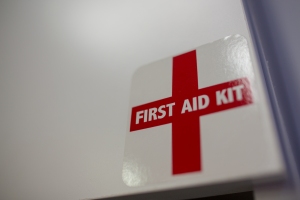 While recovering in the hospital after surgery recently, I had the chance to quietly observe the nurses and medical staff as they performed their jobs each day. Of particular interest to me was the way they interacted with me and the other patients on the floor. Their bedside manner spoke volumes about their integrity and professionalism.
While recovering in the hospital after surgery recently, I had the chance to quietly observe the nurses and medical staff as they performed their jobs each day. Of particular interest to me was the way they interacted with me and the other patients on the floor. Their bedside manner spoke volumes about their integrity and professionalism.
These nurses earned my respect and admiration because, no matter how complex or dreadful the task – from cleaning bedpans to taking blood pressure readings – they always remained cheerful and courteous. They never let the pressure of the moment or the messiness of the task get them down. More important, they never allowed any personal judgments, prejudices or emotions they might have had to interfere with their interactions with patients.
Observing them in action made me think about how we interact with clients and colleagues. What kind of bedside manner do we show to our clients as we go about our business day?
I believe there is a lot we can learn by observing nursing professionals in action. What practices can we adopt in our own businesses to make sure our clients – our patients – are comfortable? What kind of “bedside manner” can we develop that reflects positively on us personally and professionally while giving our client-patients what they need? If we adopted the same cheerful disposition of most nurses, how would that impact our relationships with clients?
1. Be cheerful and courteous.
No matter what kind of day we are having, or what we may be experiencing in our personal lives, we can’t let those emotions interfere with our interactions with clients. Set aside whatever prejudices and personal dramas you have. Always be positive, and always put the client first. This is what they mean by “service with a smile.”
2. Offer assistance at every opportunity.
Check on your client-patients often. While in the hospital, a nurse or assistant checked on me every couple of hours, even if it was to ask, “How are you feeling? Do you need anything, any pain medication? Let me know if there’s anything I can help you with.”
Schedule time to call on your clients, even if it’s just to say hello. Ask them how they are doing. Remind them that you are there to help them with whatever projects they have. Even if the call does not produce any immediate results, the fact that you called tells your client that they are important to you. And they will remember that the next time they need someone with your expertise.
3. Be patient with clients.
Hospital patients who have gone through surgery need time to rest and recover. They don’t move or respond quickly. They may feel groggy and achy. Give them time to heal. Allow them to move at their own pace. Your clients too may require extra care and patience when making a big decision that could impact their business. Give them the information and resources they need, but be gentle and patiently guide them to the decision that’s best for them.
4. Be thorough and efficient.
It’s natural for clients to ask questions, just as patients ask lots of questions of their medical team. This is an opportunity to really show your knowledgeable and compassionate side. Provide the information clients request, share different options for business solutions, and be clear with your instructions. Offer to repeat the information if clients don’t understand something. Doing your job thoroughly and efficiently shows that you respect your client’s time and demonstrates your professionalism.
Clients are our patients, and our “bedside manner” is our customer service. If we performed our responsibilities as cheerfully, competently and compassionately as nurses do, consider how much better our relationships would be with our clients, and how much better that would be for our business.
